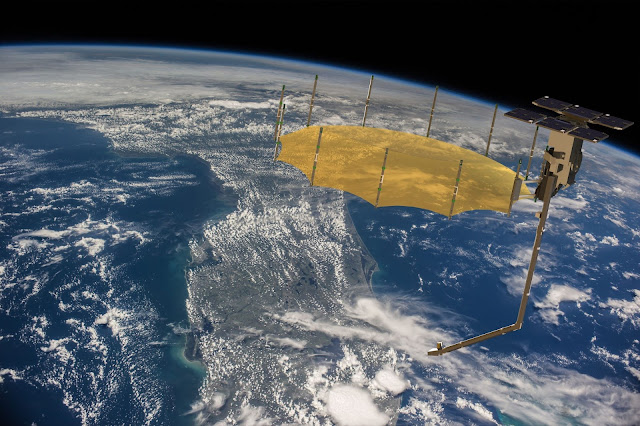Synthetic Aperture Radar (SAR) for Bathymetry Estimation

Synthetic Aperture Radar (SAR)
Bathymetry, the
measurement of water depth in oceans, seas, and lakes, is crucial for various
marine applications, including navigation, coastal engineering, and habitat
mapping. Traditional methods of bathymetry estimation were time-consuming and
often limited to shallow waters. However, the Fusion of Synthetic Aperture Radar (SAR) technology has
revolutionized bathymetry estimation, offering significant advantages over
conventional techniques.
On the basis of product type, the
global Synthetic
Aperture Radar (SAR) Market is classified into: Space based
SAR, Air based SAR. Synthetic Aperture
Radar (SAR) works by utilizing radio waves to create detailed images of
the Earth's surface.
The Fusion of Synthetic Aperture Radar (SAR)
with satellite-based altimeters allows for the estimation of bathymetry even in
deep ocean regions. SAR altimetry measures the sea surface height accurately,
and by considering the gravitational effects and geoid models, it can infer the
water depth beneath the satellite track.
Furthermore, the Fusion of Synthetic Aperture Radar (SAR) Marketwith
multi-frequency and polarimetric SAR data enables the characterization of
seafloor properties. Different frequencies penetrate the water column to
varying depths, providing valuable information about the seafloor's composition
and roughness.
One of the remarkable
features of Fusion of Synthetic
Aperture Radar (SAR) for bathymetry estimation is its ability to cover
large areas quickly. Satellite-based SAR systems can acquire vast swaths of
data in a single pass, reducing data acquisition time and costs compared to
traditional ship-based surveys.
Moreover, the
non-intrusive nature of SAR data acquisition minimizes the environmental impact
on sensitive marine ecosystems. This makes it an ideal solution for bathymetry
estimation in ecologically important regions.
In summary, the Fusion of Synthetic Aperture Radar (SAR)
technology has revolutionized bathymetry estimation, providing accurate
measurements in deep ocean regions, characterizing seafloor properties, and
covering large areas efficiently. This advancement contributes significantly to
various marine applications and sustainable ocean management.
.jpg)

Comments
Post a Comment